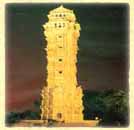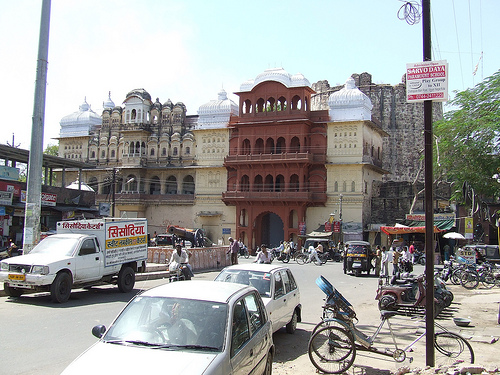
Welcome |
|
|
|
|
|
|
|
|
|
|
|
|
|
|
|
|
|
|
|
|
|
|
|
|
|
|
|
|
|
|
|
|
|
|
|
|
|
|
|
|
|
|
|
|
|
|
|
|
|
|
|
|
|
|
|
|
|
|
|
|

|
|
|
|
|
|
|
|
|
|
|
Introduction
of Kota |
|
Kota is a fascinating mixture of medieval grandeur and modern industrialization.
Kota is situated on the banks of the Chambal river below a deep gorge at
an altitude of 515 meters above sea level. Kota lies in a tract
of country that straddled a major trade route from New Delhi to
Gujarat. Kota, with its irrigation and hydro-electricity
projects, atomic power projects and other industrial units has
now transformed itself into the industrial capital of Rajasthan.
The temperature is neither too hot nor too cold. In summers the
temperature is around 43 degree Celsius and in winters it is
around 5 degree
|

|
|
Celsius. The best season to visit Kota is from August to
February. English, Hindi and Rajasthani are the common languages which are
spoken here. The
city is also well known for its traditional handicrafts
industry. In Summers, the temperature is around 38.1º Celsius
and in winters it is around 5.5º Celsius. Hindi, Rajasthani,
Sindhi, Urdu and English are the common languages which are
spoken here. |
|
|
|
|
History
of Kota |
|
The Hada chieftain, Rao Deva, conquered the territory in the 14th century
and founded Bundi and Hadoti. Later, during the reign of Mughal Emperor
Jahangir, at the beginning of the 17th century, Rao Ratan Singh, the ruler
of Bundi, gave his son, Madho Singh, the smaller principality of Kota. In
course of time Kota came to be regarded as a hallmark of Rajput power and
culture. In the past Kota was a small independent state surrounded by more
powerful neighbours. Under the guidance of the able ruler Zalim Singh in
the 19th century, Kota prospered but it then foundered on his death. The
British reunited the territory in 1894 and imposed stability.
|
|
|
|
Tourist
Attractions in Kota |
|
The main
tourist attractions of Kota are the Kota Fort and Umaid Bhawan Palace.
Kota fort was constructed from the year 1625 onwards. It is an example of
organic growth and there is no overall plan to the development of the area
within the walls. The Bhim Mahal, a large Durbar Hall, is early 18th
century and is covered with Rajput miniatures documenting the towns
periods of expansion and recording Kota’s legends. The Umaid Bhawan
Palace in 1904 was built for the Maharao Umaid Singh II and designed by
Sir Samuel Swinton Jacob in collaboration with the Indian designers. Its
exterior is buff–coloured stone with a stucco finish and include much
typical Rajput detail. The interior, however is Edwardian with a fine
drawing–room, banquet hall and garden. The Umaid Bhawan Palace has now
been converted into a heritage hotel.
|
|
|
|
How to reach Kota |
By Air:
Jaipur which is about
245 km is the nearest airport.
By Rail:
Lying on the Delhi - Mumbai route, Kota is well served by regular and superfast rail services.
By Road:
A good network of road connections links Kota with many
important cities in and outside the Rajasthan.
To know the distances
from Kota
click
here. |
|
|